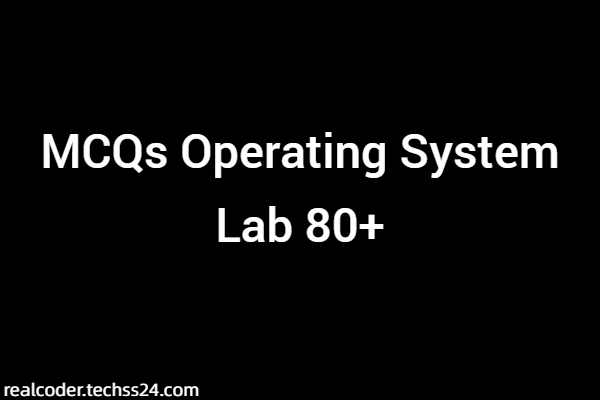1. Input string is 987654321!@#$%^&*()abcdefghij
int main()
{
int x,y,z;
char b[50];
x=open("file.txt",O_RDWR);
y=lseek(x,10,SEEK_SET);
read(x,b,15);
write(1,b,20);
} The output of the program is:
- @#$%^&*()abcdef
- @#$%^&*()abcdefghij
- Open Error
- @#$%^&*()
Ans: A
2. How many times hello will be printed?
#include<stdio.h>
#include<sys/types.h>
int main()
{
Pid_t p;
printf("hello");
Fork();
Fork();
Fork();
printf("hello");
}- 16
- 4
- 8
- 32
Ans: C
3. Choose the correct configuration
| Command | Description |
|---|---|
| IPC_SET | Deletes the message queue. |
| IPC_STAT | Sets the data in the msqid_ds structure to reflect the values associated with the message queue. |
| IPC_RMID | used to create the shared segment if it does not exist |
| IPC_CREAT | If the process has permission to do so, this sets the values associated with the message queue to those provided in the msqid_ds data structure. |
- B–>D–>A–>C
- A–>C–>B–>D
- D–>B–>A–>C
- B–>C–>A–>D
Ans: A
4. Which of the following statement is correct?
- pipe() creates a unidirectional stream having two descriptors.
- popen() creates a unidirectional stream having two descriptors.
- popen() creates a bidirectional stream having one descriptors.
- pipe() creates a bidirectional stream having two descriptors.
Ans: A
5. IPC stands for
- Inter process communication
- Inter personal communication
- Internal process connection
- Internal process communication
Ans: A
6. Which command is used to display the present working directory?
- pwd
- Whoami
- ls -l
- kernel
Ans: A
7. A file named “test.txt” already exists in your system. Which of the following syntax will be used to create new file “test1.txt ” for writing purposes?
- open(“test1.txt”, O_READ);
- open(“test1.txt”, O_RDONLY);
- open(“test1.txt”, O_CREAT|O_WRONLY, 0732);
- open(“test1.txt”, O_CREATE|O_RDWR);
Ans: C
8. To check the zombie process which of the following commands will be used?
- ./a.out & +ps
- ./a.out + ps
- ./a.out +ls
- ./a.out & + pwd
Ans: B
9. Choose the correct statement:
- Wait and signal operations are part of semaphores
- Wait and signal operations are part of inter process communication.
- Wait and signal operations are part of mutex lock.
- Wait and signal operations are part of threads.
Ans: A
10. The input in file is 987654321!@#$%^&*()abcdefghij
int main()
{
int x,y,z;
char b[50];
x=open("file.txt",O_RDWR);
y=lseek(x,-11,SEEK_END);
read(x,b,20);
write(1,b,12);
} The output of program is
- ()abcdefgh
- ()abcdefghij
- abcdefghij
- error in program
Ans: B
11. Mkfifo() creates the pipes by default in
- Unblocking mode
- Reading and writing mode
- Blocking mode
- Bidirectional mode
Ans: C
12. If exec is called immediately after forking __
- The program specified in the parameter to exec will replace the entire process
- All the threads will be duplicated
- All the threads may be duplicated
- None of the mentioned
Ans: A
13. A parent process calling _ system call will be suspended until children processes terminate.
- wait
- fork
- exit
- exec
Ans: A
14. Which of the following statement is false:
- msgget() function is used to get the data from message queue.
- msgctl() is a message queue control function.
- Msgget() is used to create and access a message queue.
- All of the above.
Ans: D
15. The third parameter of pthread_create() function is
- Name of the function which thread will execute
- Id of the thread.
- Attributes of the thread.
- Input to the function in the third parameter.
Ans: A
16. Which of the following statement is true?
- Pipe() creates unidirectional two pipes in which first is used for writing and second for reading.
- Pipe() creates unidirectional two pipes in which first is used for read and second for writing.
- Pipe() creates bidirectional one pipes which is used for reading and writing.
- popen() creates unidirectional two pipes in which first is used for read and second for writing.
Ans: A
17. The output is
int main()
{
pid_t q;
q=fork();
if(q==0)
{
printf("students");
}
else
{
printf("CSE LPU");
sleep(15);
}
}- CSE defunct LPU
- CSE LPU defunct students
- students CSE LPU
- studentsCSE LPU
Ans: D
18. The second parameter of pthread_create() function is
- Name of the function which thread will execute
- Id of the thread.
- Attributes of the thread.
- Input to the function in the third parameter.
Ans: C
19. Which of the following command opens the pipe in writing mode?
- popen(‘wr’,”wc –c”);
- popen(‘wc –c’,’w’);
- popen(‘wc’,’wr’);
- popen(“w+”,”wc –c”);
Ans: B
20. The output of given program is:
int main()
{
char a[25]; int b;
read(0,a,15);
write(1,a,8);
//printf("The output is %d\n",b);
} Consider input as:1112131415
What will be the output?
- -1
- 012131415
- 11121314
- 1112131
Ans: C
21. The purpose of creating IPC_CREAT in shmget() is:
- to create a file
- to create a pipe
- to create a shared memory segment
- none of the mentioned
Ans: C
22. In the system table the process in the below snapshot with is known as:
Ans: Zombie Process
23. Choose the correct description of process management:
Call Description a) p=lseek(fd,offset,whence) 1) Open file reading writing or both b) S=stat(name, &buff) 2) Read data from file to buffer c) a=open(file, flag, mode) 3) Write data fom a buffer into a file d) a=write(fd, buffer,nbytes) 4) Move the file pointer e) b=read(fd, buffer,nbytes) 5) Get a file status information
Ans: a->4, b->5, c->1, d->3, e->2
Operating System Lab Study Material
https://dextutor.com/courses/operating-system-programs/
Happy Learning – If you require any further information, feel free to contact me.
